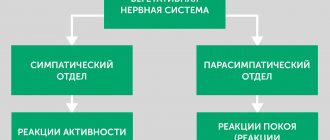The term “systems thinking” entered our lives and began to be widely used relatively recently, from the middle of the last century. Systems thinking has become the tool that makes it possible to manage increasingly complex systems of all kinds in the modern world, relating to different spheres of human activity.
Systems thinking is aimed at seeing the whole, not its parts; connections between things, not the things themselves; to identify patterns of change, rather than certain instantaneous states.
Systematic thinking is one in which, while learning about the world, a person is able to establish connections between phenomena and objects, identify existing patterns, predict their development and solve emerging problems. The term “systems thinking” is used in practical psychology and (even more often) in pedagogical practice. In this case, systemic thinking is understood as thinking in which the object of mental activity is considered as a system with corresponding properties, relationships and patterns.
Foreign economics and philosophy understand systems thinking in narrow and broad aspects. In a narrow sense - as the management of systems (social, business systems, economic systems), in a broad sense - as the ability to see a system and analyze it.
Formation of systems thinking
In pedagogy, several theoretical developments can be identified that explore the problem of developing systems thinking among schoolchildren:
- Dealing with theoretical issues of systematicity.
- Forming a systematic style of thinking.
- Dedicated to the problem of experimental and theoretical research.
In addition to theoretical ones, there are practical prerequisites for the formation of systems thinking. For this purpose, new courses and subjects are being created that create new holistic ideas about the picture of the world based on a systematic approach.
In practice, systems thinking is manifested in the mastery of certain skills:
- consider the phenomena and objects around us as systems, developing and interconnected.
- establish cause-and-effect relationships, analyze situations, detect contradictions, solve emerging problems.
- find implicit, hidden connections and dependencies.
- draw conclusions and, based on them, anticipate possible consequences.
How to develop
Systems thinking can be developed. The simplest way to train is to select an arbitrary object to study. It can be anything: a material object, a physiological feature of the body, a thriving business, a natural phenomenon. The selected object should be comprehensively studied, identifying all its interacting particles and elements, determining direct and feedback connections between them.
The wider a person’s range of interests, the better his brain functions. Enriching your horizons, you should subject each new knowledge to scrupulous analysis: disassemble it into elements and put it together into a whole. This way you can discover new talents and abilities, enrich your own life and, perhaps, even make the world a better place.
Development of systems thinking
The systems approach is very useful: knowing its basics, we can better imagine our goals, formulate them and implement them. Systems thinking helps us explore systems without getting carried away and without missing the point. It also helps you create new systems and manage systems. Systems thinking teaches you to combine the knowledge of various sciences and allows you not to become an object of manipulation, not to succumb to the hypnotic assurances of advertising, which is often very one-sided. By developing systems thinking, we learn to predict future developments.
Young children intuitively become familiar with systems and subsystems, for example, by assembling a car or house from construction kit parts or disassembling an alarm clock into wheels, cogs, arrows, glass and other components. By developing systems thinking, we gradually develop the ability to reason and explore different aspects of life from a systemic perspective. Developed systems thinking allows you to easily identify patterns, make forecasts for the development of events and influence their course.
The development of systems thinking involves acquiring and improving certain skills and abilities:
- consider ongoing phenomena, processes, situations as a specific system;
- identify the main, basic elements of the system;
- master analysis and synthesis to the extent that you can creatively use the existing knowledge base and generate new ideas;
- be able to evaluate the situation critically under conditions of system analysis;
- have the skill of reflection (comprehension, self-analysis, assessment of one’s activities in the process of systemic analysis of processes or phenomena);
- be able to analyze and predict the development of the system.
Thinking based on a systems approach considers an object or phenomenon from different sides, in different aspects, holistically, interconnected, taking into account other systems and connections. TRIZ (the theory of solving inventive problems) is based on a systems approach, because without knowledge of the system it is impossible to make it better.
Systems thinking technology
Simulation modeling, interactive games, systems thinking schemes, and others are used as technologies for the development of systems thinking in adults
In school practice, when working with texts, two types of technologies are mainly used:
- Indirect, based on the elaboration and assimilation of knowledge on subjects (note-taking, planning, retelling, text analysis, dialogue, highlighting theses, writing a report).
- Metacognitive technologies. These include technology for the development of critical thinking, methods of system analysis and others. They develop the ability for independent thinking, analytical abilities, the ability to generalize, systematize, compare and other components of systemic thinking.
When analyzing a system, it is important to learn to identify its main parts and functions. To do this you need to answer a number of questions:
- What is this system for?
- How does it work?
- What parts help perform its main function?
- What are the connections between them?
If you doubt whether a certain part of the system is the main one, try eliminating it. If the system “falls apart”, it means that this part was the main one. It is also possible to determine the important connections of the system, excluding connections between the main parts.
In the book “Technology of Systems Thinking”, created by a team of authors based on the ideas of Candidate of Philosophical Sciences G.P. Shchedrovitsky, detailed instructions are provided. It is recommended for those cases when difficulties arise, and acting according to a familiar pattern and using stereotypes is useless.
This systems thinking technology contains a number of step-by-step recommendations:
1) Define the “framework”
To do this, set goals and guidelines for the future and create a list of tasks that need to be solved on the way to the goal.
2) Define the process
- decide what management processes will be involved (this could be development, creation, recreation, etc.)
- identify the processes taking place.
- find the process that needs to be changed.
3) Analyze the situation and create the boundaries of the control system
4) Create block diagrams
- identify important points for the operation of the system;
- identify the interdependence of these points;
- draw the connections between them;
- identify which processes are important for the successful progress of the business;
- distribute functions to those places where tasks to achieve goals can be solved.
5) Determine what is known about the difficulties
- what tasks currently have neither resources nor solutions;
- what are the problems;
- what connections are missing, which existing ones are problematic?
6) Draft new organizations
- determine what they are;
- which ones will remain unchanged;
- which of them will receive other functions;
- what material they will work in.
Organizations mean people, groups, organizations. The material for organization is personnel, technology, equipment, and software.
7) Select and train new specialists
Determine and voice your requirements for personnel.
The Art of Systems Thinking
One of the world's most famous systems thinking experts is American researcher, writer and teacher Donella Meadows. In her book “The ABCs of Systems Thinking,” she introduces the basics of understanding systems, their structure and behavioral characteristics. The author convinces us that systems thinking is an important tool that cannot be avoided when solving problems of all kinds, no matter what area of our lives they concern. Without knowledge of the ABCs of systems thinking, without understanding the peculiarities of the behavior of systems, it is difficult to learn how to interact with them successfully.
All systems have some properties, while individual parts of the systems do not. Analysis of the parts that make up a system does not reveal the properties of the system itself. These properties are revealed as a result of the system when we observe it in action.
In their book The Art of Systems Thinking: Essential Knowledge of Systems and Creative Problem Solving, the authors (Joseph O'Connor and Ian McDermott) make several important points:
- It is important to learn to understand what type of complexity is encountered in the system: dynamic or detailed. By detailed we mean complexity, which is associated with the number of elements that are analyzed, and by dynamic, we mean complexity, which is associated with the relationships and interconnections of elements.
- The more connections there are in the system, the more opportunities there are to influence the system.
- It is important to correctly find the point of application of forces - and then the lever will work.
- Point changes will not work: there will always be some side effects.
The art of systems thinking is knowledge that allows you to learn to think more broadly and holistically, overcome rigid thinking and solve emerging problems. Mastering the art of systems thinking leads to the understanding that thinking is inseparable from the problems that arise in us. Problems are a consequence of previous events and our thoughts about them. We ourselves are an integral part of our problems. By applying the principles of systems thinking, we will be able to better understand our own beliefs and methods of action, because even the process of thinking itself is a system of our views and beliefs.
System properties
Let us examine several basic properties of systems that are recognized as correct in most sources.
- The system consists of elements.
- Elements must interact with each other.
- Together they, as a system, perform some useful function. If you change something in the interaction scheme, the composition of the elements, the system will begin to change, and its main function will also change.
A systematic approach is definitely needed in management. It can be used in the process and project approach, strategic management, and organizational design. Any functional area in a company - finance, personnel, marketing - requires a systematic approach when reaching the very minimum level of management.
Systems thinking tests
In the modern world, tests for systematic thinking help to identify such important professional qualities as leadership, ability to work in a team, resistance to stress and others. They are in demand when choosing a candidate for a position or an employee whose new responsibilities require mastering the skills of a systematic approach to a problem, searching for solutions and implementing plans. For example, the SRT (Systems Reasoning Test) test, which includes identifying the main elements in large amounts of information, analyzing graphs and diagrams, identifying patterns, and finding relationships. Thanks to this test, it is possible to determine whether at this stage the candidate can cope with work tasks that require a systematic approach.
One of the tests from CEB SHL, designed to identify the ability to quickly analyze scattered (at first glance) information and determine relationships and ways of their application, is called “Fastrack”. Its essence is to, having received information about several different situations presented on small multi-colored cards, systematize it, identify key points and relationships between them, and derive rules on the basis of which a solution can be found.
“Information Analysis” tests reveal the level of certain abilities:
- Understand the text and evaluate the correctness of logical conclusions. The essence of the task is as follows: you need to read the text, analyze the statement stated in it, draw conclusions about falsity, truth, or the impossibility of assessment due to insufficient information.
- Interpret the data. This test reveals the level of ability to analyze numerical tabular information, including statistical information, and draw correct conclusions on this basis.
- Analyze charts. This test measures abstract thinking ability. Based on the analysis of a series of diagrams, you need to find a logical pattern and continue the sequence in the only correct way.
One of the test options for systems thinking is the method of L. I. Sharagina. In this case, you will need to ask the maximum number of possible questions to the concepts denoting a phenomenon or object. To evaluate the results, the questions received are divided into two groups:
- General questions that do not contain information about the phenomenon or object.
- "System" questions:
- affecting the functions of an object or phenomenon (its role, meaning, use) or its properties;
- reflecting the connection of the system with other systems or with processes in which the object (phenomenon) is involved;
- reflecting the relationship of this system with a person;
- reflecting the relationships between system elements.
Such an analysis will show not only the breadth and depth of thinking, but also, based on them, systematic thinking. In the described methodology, the breadth of thinking is reflected by the number of questions related to system categories; depth – the number of questions asked in all categories; Systematicity will show the result of the product of the breadth index and the depth index.
Systematic thinking makes it possible to see the situation broadly and deeply, identifying the causes that give rise to problems and finding ways to avoid their occurrence in the future.
Thanks to developed systems thinking, we see how decisions made are reflected in events and other people. The ability to consider the full facts affecting a problem, as well as the impact of one's decisions on others, is often a necessary condition for success.
You can train thinking, attention, memory and perception comprehensively, regularly and with pleasure using online exercises for brain development performed in the form of games.
We sincerely wish you success in self-development!
Online business simulation Cesim Firm
Computer business simulation Cesim Firm simulates the management of a manufacturing company, where the functions of production, sales, marketing, logistics, HR and finance are implemented. The management team needs to ensure the development of the company in a highly competitive environment over 8-10 years of management, ensure the achievement of target indicators for operational efficiency and market capitalization.
A business simulation can involve from three to an unlimited number of participants. The level of customizable competition is from 2 to 12 companies in each space, which corresponds to very low to very high competition between teams. The program can be implemented both face-to-face and remotely.
Results of using Cesim business simulations
Online business simulations allow participants to develop an understanding of the functioning of business systems in a competitive, changing environment, gain experience in decision-making in a continuous management cycle, which is characterized by:
- Analysis of the current situation, the use of nonlinear systems analysis tools, diagnostics of existing loops of reinforcing and balancing feedbacks;
- Making informed rational decisions based on the priority of current indicators, choosing the best alternative from existing opportunities and risks;
- Working with market and financial information. Analysis of the actual results in the round, as realized opportunities and risks that occurred.
Since in a business simulation, participants first go through several training rounds to get acquainted with the environment, and then 8-10 years of managing their virtual company, this allows them to repeatedly practice the principles of analyzing the behavior of interconnected dynamic systems, the emergence of problems in an existing business, and making informed decisions.
See more about the business simulation, including a video, here: https://grow-time.ru/growth/cesim/firm
It is also possible to use Cesim industry solutions [6] to develop systems thinking skills. For example, business simulations: Cesim Bank “Bank Management”, Cesim Retail “Retail Sales Management”, CesimPower “Energy Company Management”, Cesim Dealership “Car Dealer Management”. See also the full list of industry solutions here: https://grow-time.ru/growth/cesim











